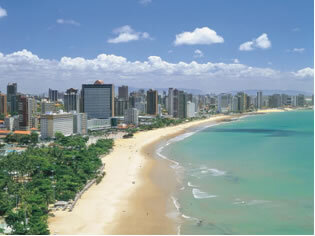Sergipe is one of the nine federative units that make up the Northeast Region. With a territorial extension of 21,918,354 square kilometers, the state has 2,068,017 inhabitants, according to data released in 2010 by the Brazilian Institute of Geography and Statistics (IBGE).
For centuries, Sergipe's economy was totally dependent on sugarcane cultivation, however, from the 1990s onwards, there was a diversification of activities. Through tax incentives, its energy potential, generated by the Xingó plant, and the exploration of oil and natural gas, there was a considerable increase in industrial production.
In 2008, Sergipe's Gross Domestic Product (GDP) reached the mark of approximately 26.1 billion reais, contributing 0.6% to the Brazilian GDP; at the regional level, its participation was 4.8%, being the second lowest. Only the state of Piauí had a lower contribution: 4.1%.
The composition of its GDP is as follows:
Agriculture: 4.6%.
Industry: 30.6%.
Services: 64.8%.
Agriculture has sugarcane as the main product. Other important crops are: orange, coconut, cassava, corn, beans, rice, sweet potato, pineapple, passion fruit, banana, lemon, among others.
Livestock, in turn, is not very expressive, being composed of cattle, goats and poultry herds.
The state has important mineral resources, such as: oil, natural gas, limestone and potash, in addition to the extraction of sea salt. The exploration of oil and natural gas has boosted the industrial sector.
Do not stop now... There's more after the advertising ;)
Industry accounts for 30.6% of Sergipe's GDP. The main industrial segments are food, leather products, furniture, oil extraction and mineral products. Aracaju, the state capital, is the city with the highest industrial concentration.
The services and trade sector is driven by tourism. Sergipe has a beautiful coastline, especially Aracaju, where many tourists can enjoy beaches such as Atalaia, Aruana, Náufragos, Refúgio, Sea bass, among others. Another highlight of this sector of the economy is the city of Itabaiana, famous for its gold and precious jewels trade.
Export and import data from the state of Sergipe:
Exports – 111.6 million dollars.
Orange juice: 42%.
Cement: 28%.
Footwear: 13%.
Sugars: 6%.
Other juices: 3%.
Others: 8%.
Imports – 203.6 million dollars.
Fertilizers and fertilizers: 29%.
Wheat: 21%.
Petroleum Coke: 10%.
Machines and equipment: 10%.
Yarns and fabrics: 9%.
Textile machinery: 5%.
Others: 16%.
By Wagner de Cerqueira and Francisco
Graduated in Geography
Brazil School Team
Sergipe - Northeast region - geography of Brazil - Brazil School


